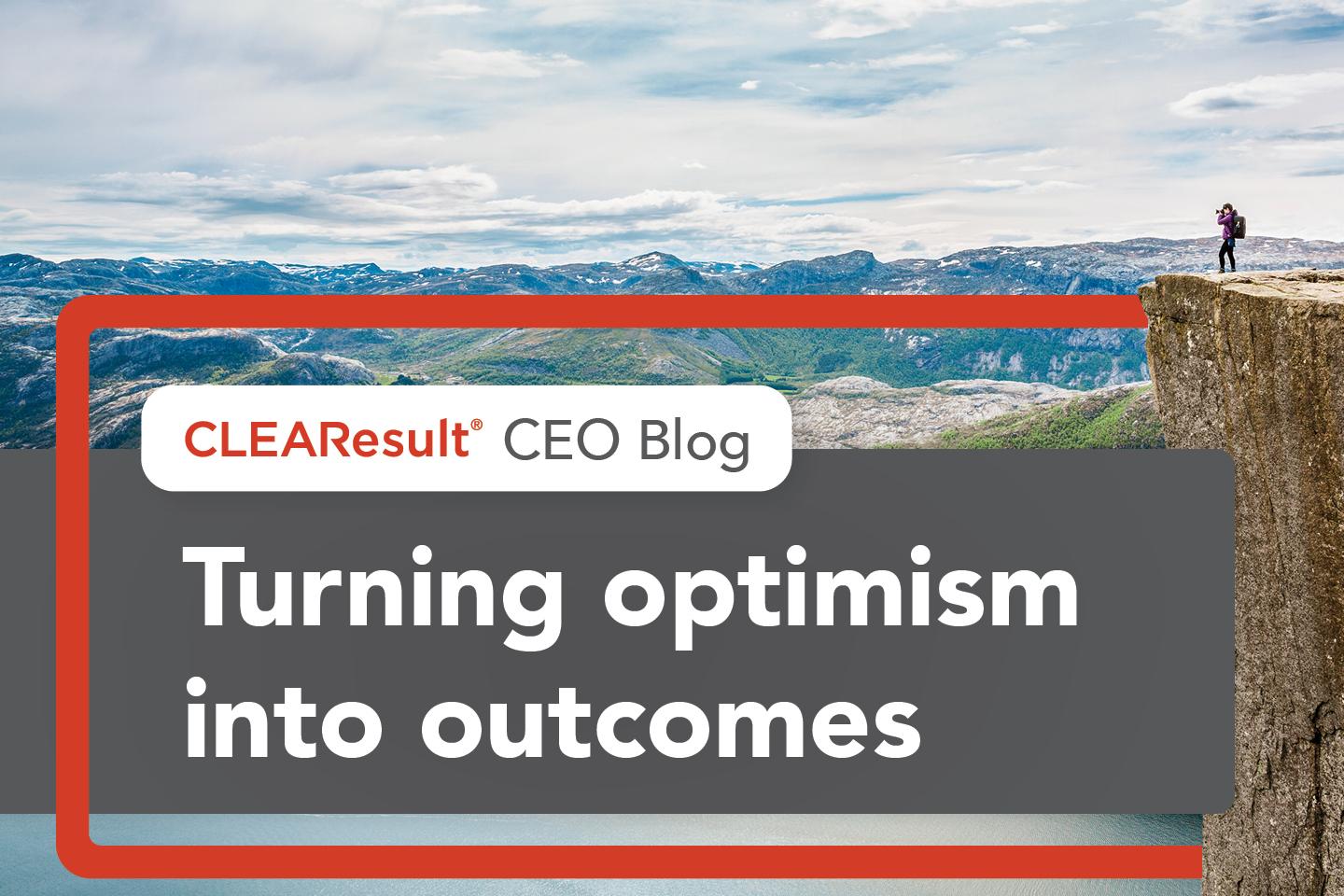Turning Optimism into Outcomes

This article was originally posted on LinkedIn.
It’s been a fast start to 2023. CLEAResult is coming off one of our most successful years to date. The energy industry is receiving a lot of attention, and with the Inflation Reduction Act, a level of investment never seen before. Everyone is rightfully optimistic. The plans people are making today will have a huge impact on the way people use energy for decades to come.
However, as the energy industry continues to make progress toward decarbonization and environmental sustainability, the challenges are also clear. Global electricity demand is expected to rise 3% per year between 2023 and 2025, and higher energy prices in 2022 have been difficult for people and businesses to keep up with, especially as hotter summers and colder winters become more common. The climate workforce is also growing, but not yet fast enough to keep up with demand.
All that said, hope and a sense of urgency have us all working faster than ever. Renewable energy grew to 23% of U.S. generation in 2022, a 12.6% increase from 2021. Climate careers continue to outpace other industries, growing 4% in energy alone, and clean energy programs, including energy efficiency, are breaking participation records year after year.
Everything’s trending in the right direction. Enthusiasm is in the air, and people are ready to turn the industry’s optimism into the sustainable outcomes we all know are possible.
Meeting people where they are.
Everything we do as an industry is aimed at making energy better for people and more sustainable for our planet. We focus on building confidence with every customer to make sure any business or individual we interact with understands the meaningful difference they’re making by using less energy.
To build confidence, it’s important that programs are flexible and able to meet the needs of households and businesses of all sizes, whatever business they are in. Just a few weeks ago, our decarbonization team went over to Fenway Park to begin an energy audit. The results of that assessment will give Fenway’s leaders the data they need to plan their next steps and make informed decisions on their sustainability journey.
Our team will also be out west soon with the Colorado Energy Office to perform scope 1 emissions assessments of industrial and manufacturing sites. Those assessments will allow the energy office to make the most of its $25 million Clean Air Program Grants and give their state, and others, a model to follow for maximizing the impact of all the climate investments coming our way.
Energy efficiency is essential.
We can’t emphasize it enough—energy efficiency is the least expensive, most immediate solution we have to reduce demand, lower costs and accelerate the energy transition. In 2019, ACEEE research touted that energy efficiency alone could cut U.S. energy use and greenhouse gas emissions in half by 2050. The latest IPCC report frequently cites enhanced energy efficiency as a necessary component of long-term energy reliability and a key driver of GHG emissions reductions.
As renewable energy expands and generation becomes more weather dependent, energy efficiency will make sure every kWh is used effectively. As the trend to electrify everything continues, we’ll need our systems to be as energy efficient as possible to give the grid more flexibility and keep people safe and comfortable during periods of high demand.
If there’s one thing I’ve learned as a leader in the business of sustainability, it’s that everyone can make an impact. Whether it’s a business or an individual residence becoming more energy efficient, those contributions help all of us make progress toward a more sustainable planet.
Thank you for reading,
Rich